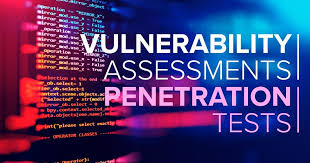A Vulnerability Assessment (VA) is a systematic process of identifying, quantifying, and prioritizing (or ranking) the security weaknesses (vulnerabilities) present in a system, network, application, or other IT environment. The goal of a VA is to provide an organization with the awareness needed to understand its security posture and to take appropriate steps to mitigate risks before they can be exploited by attackers.
Here’s a breakdown of what a Vulnerability Assessment entails:
Key Objectives:
- Identify Weaknesses: Discover potential security flaws in hardware, software, configurations, and even human processes.
- Quantify Severity: Assign a level of risk or severity to each identified vulnerability based on its potential impact and ease of exploitation.
- Prioritize Remediation: Help organizations focus their resources on addressing the most critical vulnerabilities first.
- Improve Security Posture: Provide insights that enable organizations to strengthen their defenses and reduce their attack surface.
- Meet Compliance Requirements: Many regulations and standards mandate regular vulnerability assessments.
The Typical Vulnerability Assessment Process:
While specific methodologies can vary, a common vulnerability assessment process includes the following steps:
- Asset Discovery: Identifying and cataloging all IT assets within the scope of the assessment, including hardware (servers, network devices, endpoints), software (operating systems, applications), and cloud-based resources.
- Vulnerability Scanning: Using automated tools (vulnerability scanners) to scan the identified assets for known vulnerabilities. These tools compare the systems against a database of known security flaws, looking for open ports, running services, software versions, and configuration issues. Different types of scans include network-based, host-based, and application scans.
- Vulnerability Analysis: Analyzing the results of the scans to identify the source and root cause of the vulnerabilities. This step involves verifying the findings (reducing false positives) and understanding how each vulnerability could be exploited.
- Risk Assessment: Prioritizing the identified vulnerabilities based on factors such as:
- Severity score (often using systems like CVSS – Common Vulnerability Scoring System).
- Potential impact on business operations and data confidentiality, integrity, and availability.
- Ease of exploitation.
- Affected systems and data sensitivity.
- Availability of patches or remediation measures.
- Reporting: Creating a comprehensive report that details the identified vulnerabilities, their severity levels, potential impact, and recommended remediation steps. The report should be clear, concise, and actionable for the relevant stakeholders (IT staff, security teams, management).
- Remediation (This is often considered a separate phase in the broader Vulnerability Management lifecycle): Addressing the identified vulnerabilities by applying patches, updating software, reconfiguring systems, implementing security controls, or other mitigation strategies.
- Re-assessment/Verification: After remediation efforts, a follow-up assessment is often performed to verify that the vulnerabilities have been successfully addressed.
Types of Vulnerability Assessments:
Vulnerability assessments can target different layers and aspects of an organization’s IT infrastructure:
- Network and Wireless Assessment: Focuses on identifying vulnerabilities in network devices (routers, switches, firewalls) and wireless infrastructure (Wi-Fi access points).
- Web Application Assessment: Examines web applications for security weaknesses like SQL injection, cross-site scripting (XSS), and other OWASP Top Ten vulnerabilities.
- Database Assessment: Identifies vulnerabilities and misconfigurations in database systems.
- Host-Based Assessment: Evaluates the security of individual servers, workstations, and endpoints, looking for unpatched software, weak configurations, and malware.
- Cloud Security Assessment: Focuses on identifying vulnerabilities in cloud environments and configurations.
- Social Engineering Assessment: Evaluates the susceptibility of employees to manipulation tactics like phishing.
- Physical Security Assessment: Examines the physical security measures in place to protect IT assets.
 care@thedigitaldefence.com
care@thedigitaldefence.com



Leave a Reply